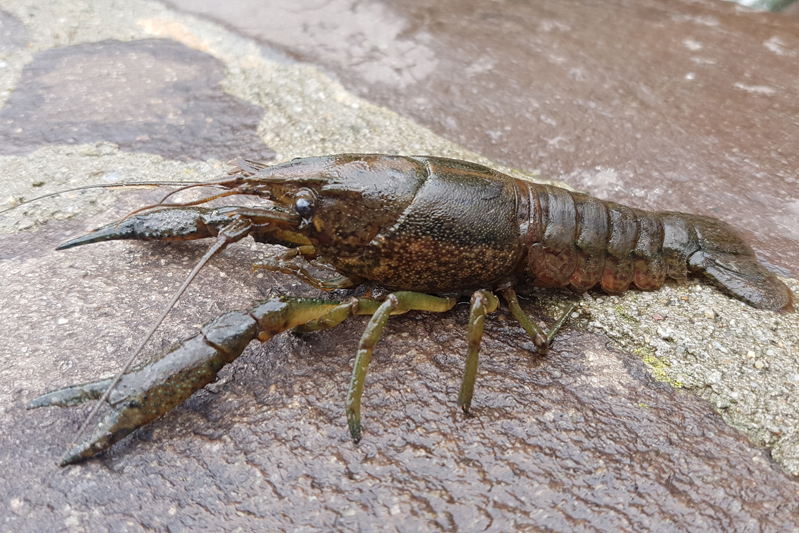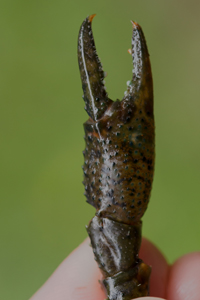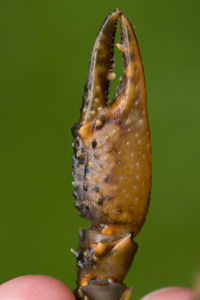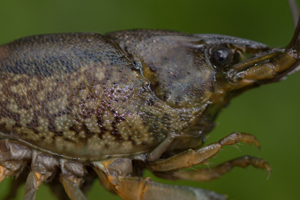|
||||
|
Procambarus virginalis Lyko 2017 |
|
|||
|
General description. Distribution |
||||
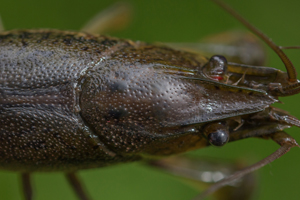
Small to medium sized crayfish,
adults reaching 4 to 8 cm in total length. General marbled aspect is specific
for this species. The crayfish appears marbled because of the
multiple dark and bright spots around the lateral sides of the
carapace over the general brown color of the body. Younger specimens
have a transparent aspect or other different colors. Ventral side of
the claws is brighter compared to the upper side. Elongated rostrum
with smooth and slightly curved margins, and triangle shaped apex. A
single postorbital ridge with distal spine, cervical groove having
several spines on its ventral side. The certain diagnosis from its
relative P. alenii is given by the flatter
annulus ventralis with
a bell-shaped aspect, no scooped lateral wings on the lateral parts,
and not anteriorly peaked.
|
||||
|
Habitat and Ecology |
||||
| As a result of entering the Romanian market, and due to misperception among some aquarium owners, individuals of this species reaching the natural environment can establish independent populations. This crayfish prefers warmer waters, frost usually completely destroy populations because this crayfish behavior does not include burrowing. Usually the established populations persisted in urban semi-natural water bodies. This species can be a threat to the native crayfish species because it is a reservoir for the crayfish plague pathogen Aphanomyces astaci, a pathogen originating in North America producing mass mortality to native crayfish populations. | ||||
|
Life history |
||||
| The anthropogenic origin of this species as a consequence of the increasing interest for pet-species followed by a spectacular evolution of the populations of P. fallax to the obligate parthenogenesis of P. fallax f. virginalis, females only representing the whole global populations by development of embryos from unfertilized oocytes. It is not known precisely the period in which this species lay eggs in the wild, a single female being sufficient for the establishment of a population. | ||||
|
Selective bibliography |
||||
|
1. Holdich DM, Haffner
P, NoŽl PY (2006)
Species files
in
Souty-Grosset, C., Holdich, D. M.,
NoŽl, P. Y., Reynolds, J. D., Haffner, P. (Eds.), Atlas of Crayfish
in Europe. Musťum national d’Histoire naturelle, Paris (Patrimoines
naturels, 64); 3. P‚rvulescu L, Togor A, Lele SF, Scheu S, Șinca D, Panteleit J (2017) First established population of marbled crayfish Procambarus fallax (Hagen, 1870) f. virginalis (Decapoda, Cambaridae) in Romania. BioInvasions Records 6 4. Lyko F (2017) The marbled crayfish (Decapoda: Cambaridae) represents an independent new species. Zootaxa, 4363(4), 544-552 |
||||
